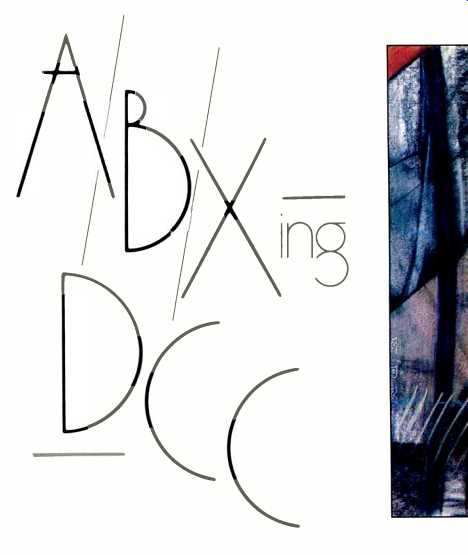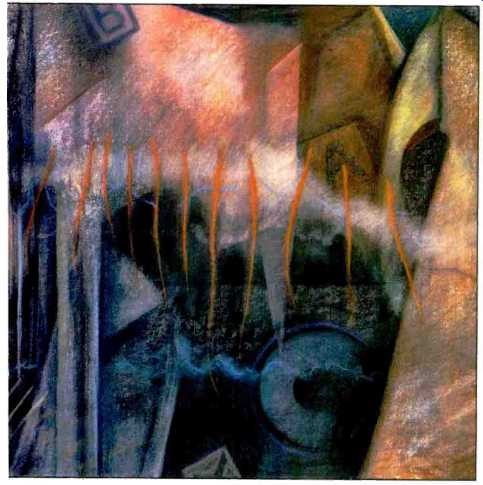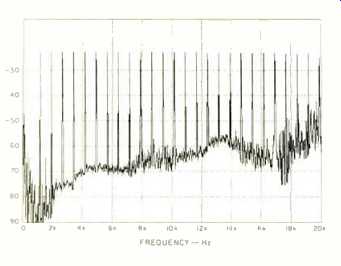

by David L. Clark
Car audio manufacturers are especially interested in Philips' new Digital Compact Cassette format because it promises digital sound quality and compatibility with existing cassette libraries. However, DCC's digital format is not the same as CD's or DAT's. There simply is not enough room to record all of the bits necessary for 44.1-kHz sampling, 16-bit quantization, and error correction. But does DCC's data reduction result in sound inferior to CD? To find out, Delco Electronics conducted a series of tests last November in their listening room in Kokomo, Indiana. I was fortunate to be a part of this testing.
Philips' scheme of reducing data, hopefully without reducing sound quality, is called Precision Adaptive Sub band Coding (PASC). It starts with a technically superior 18-bit format but attempts to encode only the audible sounds to achieve a 4-to-1 data reduction. (Editor's Note: For more details, see the feature article by David Ranada in the September 1991 issue.) So what about the supposedly inaudible sounds that are not encoded? They are mainly soft, high-frequency sounds that are not heard because they are masked by simultaneous louder sounds, often lower in frequency.
PASC encoding is a dynamic process; it continuously scans the audio spectrum and assigns its "bit pool" to encode the least-masked sounds.
Gerry Wirtz, senior product manager of the DCC project for Philips, took to Kokomo a test box containing a prototype PASC encode/decode system, a digital delay line matched to the PASC system's encode/decode time, and a switcher to select between the outputs of the PASC and delay signal paths.
This switcher is operable by computer for double-blind listening tests. Wirtz was accompanied by Wil Wagenaars, Philips' psychoacoustics testing expert. Michael Williams, of Delco, organized the testing sessions and recruited listeners from Delco engineering and sales employees. Most of these listeners were trained and practiced in Delco's ongoing program of assessing competitive sound systems.
Philips, having previously performed a great many listening tests of the PASC system, suggested their usual testing technique and source materials. Mike Williams instead opted to use different music segments and the double-blind A/B/X test method, so Wil Wagenaars quickly modified the computer software to use A/B/X testing. In this method, the listener is given a switcher that has three buttons: "A" for the first component (in this case, straight through, a direct feed from the source), "B" for the other component (in this case, the source after PASC encoding and decoding), and "X," the unknown, which can be either A or B. The listener's task is to switch between components and then to identify X as A or B. Neither the listener nor the person conducting the test knows the correct answer, which is why the procedure is called "double-blind." There is no time limit or other restriction during the testing. It is thought to be the most sensitive means possible of determining if there is an audible difference between A and B. Since A was a straight through connection in this test, any difference that was heard had to mean that B, PASC encoding/decoding, changed the sound-and such change is not desirable.
The Delco listening room is 16 x 25 feet, with an 8-foot ceiling and controlled acoustics. It has comfortable seats and dimmable lighting. The program sources, a Marantz CD-62 CD player and a Philips prototype DCC recorder, fed digital signals into the Philips test box. The output from the box's PASC/delay switcher was fed to a Krell Stealth 1-bit D/A converter with 18-bit resolution. (This ensured that the same converter, one capable of resolving the full 18 bits of DCC, was used for both the straight-through and the PASC encode/decode paths.) The converter's analog output was then fed through a Threshold FET Ten hl preamp and SA/3 power amp to the speakers, Shahinian Diapasons and Double Eagle subwoofers.
Music segments included: "Allegretto" (from Mozart's Piano Quartet No. 1, with Bruno Giuranna), "Sanctus" (from Fauré's Requiem, with Robert Shaw and the Atlanta Symphony Orchestra and Chorus),' "Magnificat" (from William Byrd's The Great Service, with the Tallis Scholars), "Dimples" (from Joe Williams' I Just Want to Sing), "Salamander Pie" (by Jay Leonhart on A Taste of dmp), and "Tiden Bara Gár" (R. Running/Opus 3, Test Record 1, Depth of Image). These selections are from the standard battery of 52 segments Delco uses to rate their own and competitors' car sound systems. About three-quarters of the listeners were trained evaluators familiar with the selections. A few listeners opted to use their own favorite material.
Mike Williams ran the tests for one listener at a time, requesting that each listener make 16 attempts (or trials) to identify X. He noted that inexperienced listeners showed anxiety about the test, while those who had participated in A/B/X tests before were alert and relaxed. By the time that the results of some 300 trials were accumulated, it became apparent that statistically the listeners were doing no better than chance even though many of them thought they heard a difference. Of course, there was a difference between the straight-through and the encode/decode channels; it's just that the difference was so small that it was not heard. It is not unusual for listeners to think they hear a difference even when two sounds cannot be distinguished on a statistical basis.
At this point, a different approach was tried. I planned to use a variety of test signals and signal-analysis methods to find PASC's Achilles' heel. Assuming that I could find a troublesome test signal, I planned to search for music segments with characteristics resembling the test signal, then present those segments to the listening panel.
Possibly, these segments would be audibly degraded by the PASC encode/decode process. I was not interested in the sound of the test signals, nor did the panel hear them; they were only a means of selecting difficult music passages to audition.
I knew something about PASC from papers written by Gerry Wirtz for the Audio Engineering Society. I knew, too, that PASC analyzes the data in blocks of 8 mS and divides the spectrum into sub-bands that are 750 Hz wide. I also knew that the PASC encoding bit pool is priority-assigned to the channel and the frequencies which are most audible. My strategy was to load the right channel with a difficult encoding task, thereby draining the bit pool, and then concentrate on testing the left channel.
I used the A/D converter of Philips' prototype DCC recorder to convert analog test signals for the digital input of the PASC encoder. First, I fed a 1 -kHz sine wave into just the left channel of the system and connected the output to a Tektronix 2630 FFT spectrum analyzer. What I observed was a pure sine wave not in the least degraded from the original fed from the 16 -bit, 44.1 kHz A/D converter going to the PASC encoder. How come PASC performed so well with only one-fourth the bit rate'? I presume it was because only one sub-band (the left channel, from 750 to 1,500 Hz) was active and needed to be encoded. The bit pool had more than enough resources to fully encode it. I then tried square and triangle waves. In each case, PASC seemingly had enough bits to encode the fundamental and each of its harmonics without adding noise.
Next, I fed a more complex steady-state signal into the left channel--one composed of 26 full-amplitude sine waves centered on each of the PASC bands above 750 Hz. Now the spectrum analyzer showed some noise in the PASC processing. While continuing to observe the increase in noise in the left channel, I determined that the most demanding right-channel signal was white noise, a randomly fluctuating signal containing all frequencies.
This task for the right channel must have stolen some bits from the left channel, because its measured noise went up. The sine waves and the noise are shown in Fig. 1.
The noise floor on the straight through connection was essentially unaffected by the 26 sine waves and the right-channel noise signal, as seen in Fig. 2. However, no noise was audible for either the PASC encode/decode or the straight-through connection; I heard only the dissonant cacophony of the 26 sine waves. Psychoacoustics would predict that PASC's noise would be thoroughly masked by the sine waves.
At this point, the sub-band from 0 to 750 Hz in the left channel was unused.
This range is extremely large in a psychoacoustic sense, as it carries over half of the perceived audible spectrum. It is also the only single PASC band which can contain the fundamental and its second harmonic, or two tones and their intermodulation products. The potential for audible artifacts in this band seemed to be very great, especially since the bit pool was being used up elsewhere.
My search for audible artifacts in the 0 to 750 Hz band was frustrating. I tried a range of pure tones, sliding tones, and double and triple tones, but all failed to show increased distortion on the spectrum analyzer. Some in crease in noise was seen but not heard, because the noise was far below the masking threshold of the test tones.

Fig. 1--Spectrum analysis of test signal devised to
challenge PASC, and the resulting noise. The test signal, 26 sine waves
centered on PASC sub-bands, is shown by the uniformly spaced vertical
lines. While the noise floor does rise with frequency, the noise remained
inaudible because of masking by the tones. Output levels shown are dB
re: 1.0 V.

Fig. 2--Same test signal as Fig. 1 but without PASC
encoding and decoding. As expected, the noise floor is measurably lower.
Onward. With the right channel still busy with the white noise, I tried tone bursts and sweeps in hopes of catching something missed by the 8-mS analysis window. The oscilloscope showed little waveform distortion, and my ears heard no change in the signals. An imaging check was made by feeding each channel a sharp click that seemed to emanate from exactly midway between the two speakers.
The frequency content of the click was changed, yet the image stayed centered with pinpoint accuracy. Delays, in 10-4 increments, were added to the clicks to make them image off center. Again, no measured and no audible image shifts occurred between the PASC connection and straight-through connections.
In summary, although I used a variety of test signals, I could not find an audible problem in PASC. Instruments revealed differences between PASC encode/decode and straight through, but the data strongly suggested that the differences would not likely be audible. Not every combination of test signals was tried, so perhaps someone will succeed in fooling the PASC system. In the meantime, I gave up on my original aim of finding music that would fool the system and presenting it to the listening panel.
Michael Williams' listening tests continued for 41 sessions. (Some were repeats with listeners who thought they had picked up a difference; the few individuals who had scored high were not able to repeat this on a second try.) In all, 656 responses were accumulated, of which 321, or 49%, were correct. Since 50% correct is the average to be expected from chance alone, we can conclude from the statistical evidence that the listeners failed to hear a difference between PASC and straight through. The trained listeners, by the way, did no better than the others.
Audiophiles are bound to ask how DCC sounds compared to CD. Philips might answer that DCC has the potential to sound better because of its 18 bit resolution; others will insist that you can't discard three-quarters of the bits without sustaining an audible loss. However, the answer must come from listening tests, not technical analysis.
Delco's listening tests concentrated on finding a degradation of CD sound by the PASC data-reduction scheme. None was found. Of course, the possibility still exists that in millions of hours of critical listening by consumers, some flaw may be uncovered. It may be true as well that one individual will be able to consistently hear a difference between CD and DCC sound and then be able to teach others to hear it.
What I know at this point is that DCC's PASC encoding and decoding passed the toughest battery of tests we could devise.
(source: Audio magazine, Apr. 1992)
Also see:
The Mechanics of Sony's MiniDisc--Beyond the Caddy (Dec. 1992)
= = = =